 Loading... Please wait...
Loading... Please wait...Products
- Solar Panels
- Solar Panel Kits
- Solar Generators
- Inverters
- Inverter Monitoring
- Inverter Accessories
- Balance of Systems
- Racking and Mounting
- Rails
- Flashings
- Splice Kits
- Stopper Sleeves
- Conduit Mounts
- Attachments
- Brace Assembly
- Base Mount
- Brackets
- Bolts
- Clamps
- Caps
- L-Feet
- Washers
- Skirt
- Lugs
- Tilt Legs
- Hooks
- Stand-Offs
- Ballast Bay
- Top of Pole Mount
- Side of Pole Mount
- Flush Mount Kits
- Ground Mount Kits
- Roof Mount Kits
- Hardware Packages
- Wire Management
- Batteries
- Battery Accessories
- Charge Controllers
- Tools and Supplies
- View All Products
Solaris Blog - Commercial Solar Panels
High-Watt Solar Panels: What You Need to Know
Posted by Brandi Casey on 3rd Jan 2021

Solar energy technology has progressed rapidly in recent years, less than a decade ago the maximum output for residential solar panels averaged less than three hundred watts. Today, modules 400w+ are common, and supplied by a number of manufacturers, each providing various offerings including - value and high efficiency, bifacial, and split cell solar panels. In order to define what a high-watt module is today, we selected modules 380w+, based on solar panel compatibility with Enphase microinverters and SolarEdge optimizers.
So, why should you choose a high watt module? In addition to their higher output, high-watt solar panels have a higher efficiency output than lower watt panels. The same is true for other modules, a 350w solar panel will have a higher efficiency rating than a 345w panel, however, the difference in efficiency becomes more noticeable between a 350w and 400w solar panel. Their higher output also means that you will need fewer modules and other related equipment to complete the same solar project.
Example System:
900kWh/month average = 10,800kWh/year
10,800kWh/yr / 365 days / 4.5 peak sun hours / 0.82 degradation rate = 5,391 watts or ~5.4kW system
- 5,400 watts / 350 watts = ~15.43 solar panels or 15 for 5.25kW or 16 for 5.6kW
- 5,400 watts / 400 watts = 13.5 solar panels or 13 for 5.2kW or 14 for 5.6kW
High-watt modules can also be utilized for installation sites with limited roof space. It is important to keep in mind that most high watt solar panels are composed of 72 (or 144 half cut) cells rather than 60 (or 120 half cut) cells. Their higher cell count makes the solar panels 8-10” taller than 60 cell panels on average, so be sure to keep that in mind if the space you are working with is limited.
In this review of high-watt solar panels, we will be analyzing the following:
- High-Watt Solar Panel Comparison
- High-Watt Solar Panels and Inverter Sizing
- Solaris Recommendations
High-Watt Solar Panel Comparison
There are a number of high watt modules currently on the market or set to be released early 2021. When comparing solar panels there are five things you should pay attention to: Maximum Power Output, Efficiency Rate, Warranty Period, Degradation Rate and 25-Yr Output.
The maximum power output and efficiency rate determine the expected amount of energy production from your solar modules. All solar panel manufacturers have at least a 25-year linear performance warranty, this warranty guarantees the output of the solar panel based on the modules degradation rate. The average product warranty for solar panels is 10 years, however, some manufacturers such as LG and Panasonic offer 25-year product warranties as well.
Factoring the degradation rate of solar modules will let you know how much power your solar panel system will be producing at the end of your warranty period. Panels continue to operate after this point, typically at the same degradation rate noted by the manufacturer.
| Model # | Max. Power Output | Efficiency Rate | Warranty Period | Degradation Rate | 25-Yr Output | Downloads | |
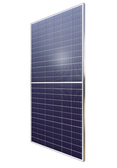
|
X HC AC-400MH/144S | 400w | 19.88% |
- 15 Yr Product - 25 Yr Perform. |
0.5% | 85% |
Specs Warranty |

|
CS3W-395PB-AG | 395w | 17.68%* |
- 10 Yr Product - 30 Yr Perform. |
0.7% | 80.7% |
Specs Warranty |

|
Q.PEAK DUO L-G5.3 400 |
400w | 19.9% | - 12 Yr Product - 25 Yr Perform. |
0.54% | 85% | Specs Warranty |
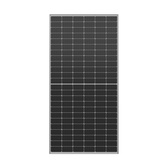
|
Q.PEAK DUO L-G6.2 420 |
420w | 19.6% | - 12 Yr Product - 25 Yr Perform. |
0.54% | 85% | Specs Warranty |

|
JAM72S10-405/MR |
405w | 20.2% | - 12 Yr Product - 25 Yr Perform. |
0.65% | 81.4% | Specs Warranty |
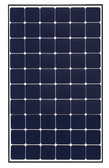
|
LG380Q1C-V5 |
380w | 22% | - 25 Yr Product - 25 Yr Perform. |
0.33% | 90.08% | Specs Warranty |
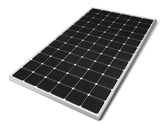
|
LG415N2W-L5** | 415w | 20%* | - 25 Yr Product - 25 Yr Perform. |
0.33% | 90.08% | Specs Warranty |
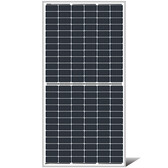
|
LR4-72HPH-440M |
440w | 20.2% | - 10 Yr Product - 25 Yr Perform. |
0.55% | 83.8% | Specs Warranty |

|
LR6-72HPH-380M |
380w | 19% | - 10 Yr Product - 25 Yr Perform. |
0.55% | 83.8% | Specs Warranty |

|
MSE385SR9S |
385w | 19.11% | - 12 Yr Product - 25 Yr Perform. |
0.7% | 80.2% | Specs Warranty |

|
SIL-380 NT |
380w | 19.2% | - 25 Yr Product - 30 Yr Perform. |
0.65% | 80.3% | Specs Warranty |

|
TSM-410-DE15H(II) |
410w | 197% | - 10 Yr Product - 25 Yr Perform. |
0.68% | 80.68% | Specs Warranty |
*Bifacial module, value does not reflect efficiency boost from bifacial gain. **Commercial panel only.
Depending on the brand, manufacturer and technology, high-watt solar panels the average cost per watt ranges between $0.50/watt and $0.80/watt+, with manufactures such as Canadian Solar and Trina Solar comprising the lower range, and LG Solar coming in at the higher range. As reflected above, the energy output of LG solar panels in comparison to a Trina Solar module is much higher. Which panel you select will largely be determined by your project specifications and budget.
High-Watt Solar Panels and Inverter Sizing
Sizing out microinverters and string inverters for high watt modules follows the same guidelines as lower watt modules. Likewise, when utilizing high watt modules for an off-grid set-up, it is important to spec out your charge controller correctly. Most off grid systems can utilize high watt modules up to 2kW depending on the charge controller and battery backup system you are using. For the duration of this review, we will be focusing on on-grid and hybrid systems utilizing microinverters, string inverters with optimizers and string inverter systems.
Microinverters
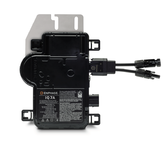 Enphase Energy microinverters are mini inverters that are installed on the back of each of the solar panels in your array. Microinverters are a good fit for almost any installation, they are available for both single phase (most residential) and three phase (commercial) systems. Moreover, they can be used for both on-grid and hybrid solar energy systems with the use of the Enphase Encharge lithium-iron battery system. The IQ series microinverters can be installed prior to the addition of the battery unit, this provides added flexibility in planning for your future energy needs.
Enphase Energy microinverters are mini inverters that are installed on the back of each of the solar panels in your array. Microinverters are a good fit for almost any installation, they are available for both single phase (most residential) and three phase (commercial) systems. Moreover, they can be used for both on-grid and hybrid solar energy systems with the use of the Enphase Encharge lithium-iron battery system. The IQ series microinverters can be installed prior to the addition of the battery unit, this provides added flexibility in planning for your future energy needs.
In addition, Enphase microinverters match the linear performance warranty timeframe of solar panel manufacturers (25 years), whereas string inverters typically have a performance warranty around 10-12 years. This means that you will likely have to change out your string inverter mid-way through your solar modules warranty period. This comes with its own difficulties, new inverter systems oftentimes work with different technologies - for example, one rapid shutdown solution for your current inverter may not work for the new inverters being produced by the manufacturers, even if the electrical specifications of the inverters are the same or similar.
Microinverters add flexibility in future system additions, as they are not limited by the stricter string requirements of the modules. It is also easier to mix different watt modules along their own string using microinverters, so if you plan on expanding your system in the future, plan to either oversize your inverter (which can lead to efficiency loss if not calculated correctly), or use microinverters. They come at a higher price point than the following solutions, however, their longer warranty period and added flexibility and benefits makes them an ideal choice.
High watt modules typically use either the IQ7PLUS or the IQ7A microinverters. One of the potential downsides of using high-watt modules with microinverters is the potential for clipping.
*Clipping occurs when the output of the solar panel is higher than what the microinverter's maximum output power.
Take the LG380Q1C-VA for example, it's maximum output is 380w, so this module would put out about 330w at 87% operating power. In the case of the IQ7PLUS, there would be some clipping (35w). Under normal conditions, the panel would be putting out about 285w and there would be no clipping. Generally speaking, microinverters may cause a relatively small drop in efficiency (1-2%), the rule of thumb is that the solar panel's maximum output capacity is 1.25 times the inverter capacity - in this case, the system will rarely have any reduction in production. If you live in a high sun environment, or if you select a panel that is a much higher wattage (like the 440w from Longi), it is more advantageous for you to use the IQ7A microinverters running at 240VAC to negate clipping and get more out of your solar panels.
String Inverter with Optimizers
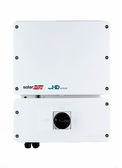 SolarEdge inverters can be used in both on-grid and hybrid solar energy systems, their single phase inverter, the HD Wave and their hybrid inverter, the StorEdge, both utilize optimizers which work in a similar way to microinverters (they both optimize the solar array, negate shade loss and prevent your array from shutting down if one of your modules is not functioning properly). They also have commercial three phase solutions that are not currently compatible with battery backup units, however, they do offer beneficial smart grid technologies that streamline and simplify commercial projects.
SolarEdge inverters can be used in both on-grid and hybrid solar energy systems, their single phase inverter, the HD Wave and their hybrid inverter, the StorEdge, both utilize optimizers which work in a similar way to microinverters (they both optimize the solar array, negate shade loss and prevent your array from shutting down if one of your modules is not functioning properly). They also have commercial three phase solutions that are not currently compatible with battery backup units, however, they do offer beneficial smart grid technologies that streamline and simplify commercial projects.
Like Enphase microinverters, the StorEdge inverter can be installed prior to the addition of the LG Chem battery backup unit. Unlike the Enhcarge system however, the LG Chem battery has a strict certification requirement that needs to be met prior to being able to obtain the battery. Keep this in mind when you are selecting your inverter. You can elect to hire an LG Chem certified installer in your area, or if you are performing a DIY installation, you can ascertain this certification by taking their course that is hosted every Thursday. Without this certification, or the certification of your installer, you will not be able to purchase the LG Chem battery. This is their requirement to meet both warranty and safety requirements.
 There is less flexibility in system expansion with string inverters, however with proper planning, you can expand SolarEdge systems. You can either account for your future energy use when planning for your system and add the panels as you go, or you can add additional inverters as needed. There is also the possibility that the solar panel that you use now, and even its wattage, may not be readily available in the future. This may mean that you need to limit the number of panels you add onto a string, and thus limit your ability to expand on a single inverter.
There is less flexibility in system expansion with string inverters, however with proper planning, you can expand SolarEdge systems. You can either account for your future energy use when planning for your system and add the panels as you go, or you can add additional inverters as needed. There is also the possibility that the solar panel that you use now, and even its wattage, may not be readily available in the future. This may mean that you need to limit the number of panels you add onto a string, and thus limit your ability to expand on a single inverter.
The warranty period of SolarEdge inverters is 12 years, while you can purchase extended warranties directly from the manufacturer, you will likely need to replace the inverter over the lifetime of your solar array. The optimizers, which are installed on the back of each module have a 25 year warranty period, and therefore will not need to be changed out during this time period. High watt modules may limit the number of panels you can utilize on a string, however, they're flexible in sizing and can be easily configured with the use of SolarEdge's online sizing tool.
String Inverter
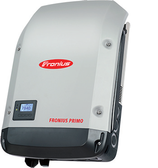 Fronius string inverters are the most cost effective inverter solution for on grid solar energy systems. While they produce hybrid inverters capable of being paired with battery backup and even AC coupled systems, the equipment can be difficult to come by and it is recommended that these systems be installed by professionals, so they may not offer the best solution for DIY installers. However, if you have a roof or ground mount array that is South facing, your geographic irradiance is high, and you are not concerned with shading, a stand along string inverter will operate your system well.
Fronius string inverters are the most cost effective inverter solution for on grid solar energy systems. While they produce hybrid inverters capable of being paired with battery backup and even AC coupled systems, the equipment can be difficult to come by and it is recommended that these systems be installed by professionals, so they may not offer the best solution for DIY installers. However, if you have a roof or ground mount array that is South facing, your geographic irradiance is high, and you are not concerned with shading, a stand along string inverter will operate your system well.
Fronius is limited to system expansion in a similar way to the SolarEdge string inverters outlined above, however, they do not require optimizers in order to operate so they offer installers the lowest bill of materials and therefore the lowest cost out of other inverter solutions on the market. Fronius string inverters can also be sized using their sizing tool.
Solaris Recommendations
High-watt solar panels are worth considering for your solar energy system, they have a higher overall efficiency rating, are typically part of newer series lines of their respective manufacturers, and can decrease your initial cost of investment for your solar array. Their limitations for installations is minimal (i.e., may not be the best fit for high kW off-grid systems, the height of 72 cell modules is taller than 60 cell which may be an obstacle to small roofs). However, from a larger standpoint, they not only offer a host of benefits, higher watt modules is the direction that solar panel manufacturers continuously strive towards.
Outside of considering the output, efficiency, warranty, degradation rate and output; you should carefully consider your inverter solution to fit your current and future energy needs. Whether or not you will add a battery backup unit in the future is tied to the inverter that you are using rather than the your solar panels. If you are looking for the best high watt solution on the market, be sure to take a look at LG solar modules, they have the highest expected out put and among the highest warranty periods of any module on this list. They come at a higher price point, but are worth considering given their high output, (they could pay for their additional cost in energy output after 10 years+).
Lower cost solutions from Canadian Solar and Trina Solar save you on your initial investment, but have a lower output percentage than any other module on this list. While manufacturers like Q.Cells sit in the middle in terms of both cost and efficiency. All the solar panels on this list have been tested and proven in the field, ultimately it is up to you to decide which solution best fits your project.
Interested in a solar quote?
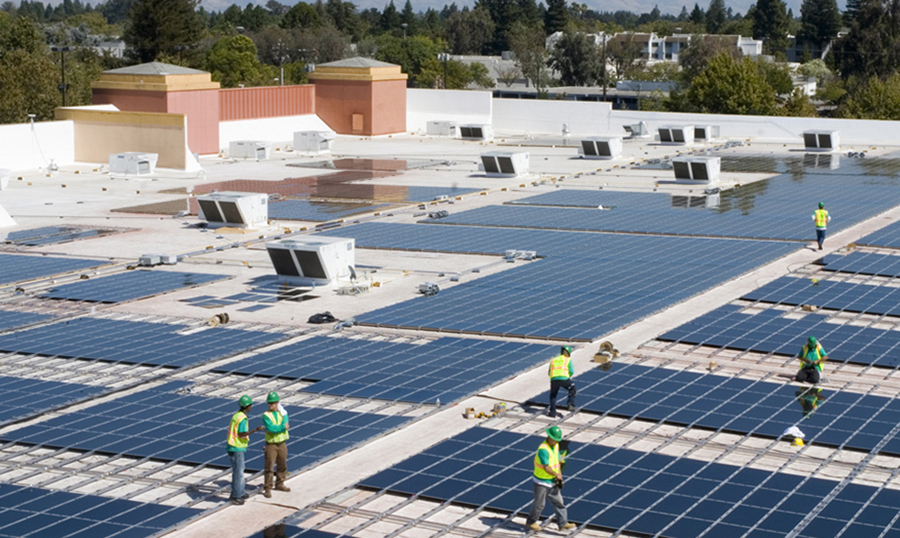
Best Solar Panels for Commercial Solar Arrays
Commercial and residential projects are similar in terms of the materials you will need to complete your system. However, commercial projects typically require larger sized systems which means you need more racking, inverters, wiring and so on. Picking the right panel for any commercial system is key in keeping cost and materials as low as possible. With this in [...]



